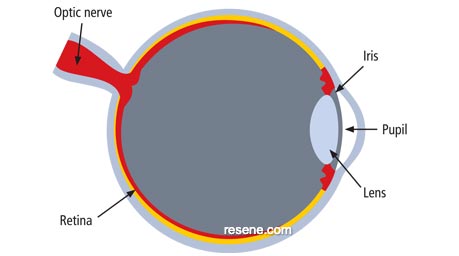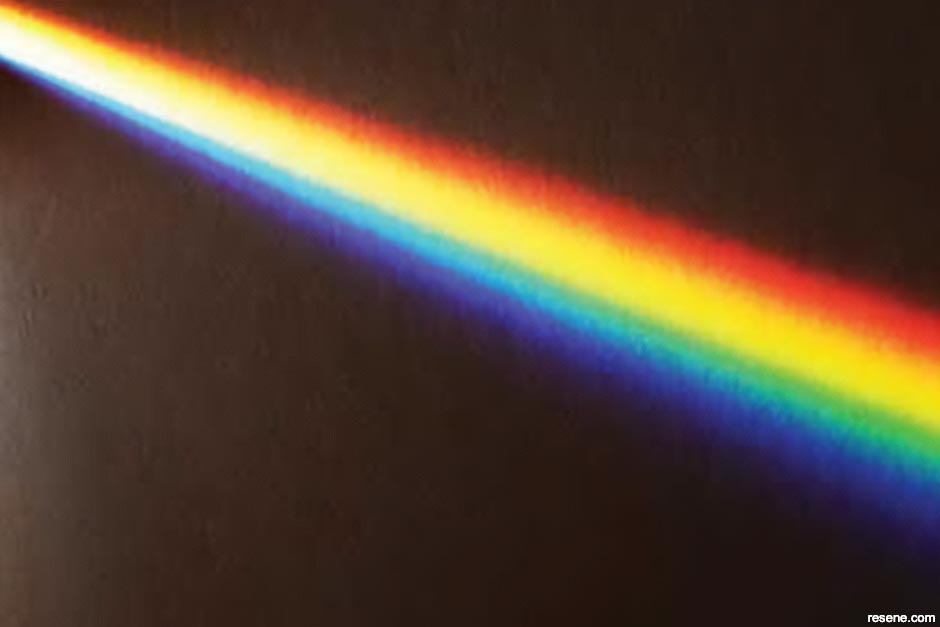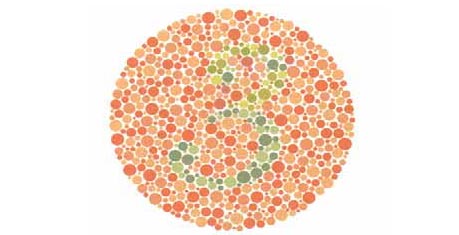Humans can see differences in the wavelengths of colours. This helps us to tell colours apart. Special cells on the retinas of our eyes detect red, green and blue colours in light, as well as black and white, which helps us see at night when there is little light.

These special cells are called cones, because they are cone shaped. Different cones understand different colours so that some cones will detect red light, some cones will detect blue light and some cones will detect green light. The cones tell the brain what colours they are seeing and our brain puts all the information together. This is how we can see all the colours we do.

Light travels in waves. Our eyes can only see light in the visible spectrum, which is made up of all the colours we see in rainbows – red, orange, yellow, green, blue, indigo and violet. Each of these has a different wavelength. This is why they are positioned differently in a rainbow.
There are two sorts of light we can’t see. Ultra-violet light has shorter wavelengths and our eyes can’t detect this. This light is used for things like x-rays. Infra-red light has longer wavelengths. We also can’t see infra-red light. Infra-red light is used for electronics such as your television remote control and the equipment that scans barcodes when you go shopping.
Colour blind people often cannot tell the difference between certain colours, such as reds and greens. Colour blindness is much more common in males than females. Generally colour blind people can see the differences between some colours but not all colours. It is rare for a colour blind person to only see black, white and greys. Normally colour blind people can still see the differences between blues, yellows and purples.

Colour blindness tests use patterns of colours to test whether the person can see the difference between two colours. A common test uses red and green dots as these are generally difficult for a colour blind person to tell apart.
Try this for yourself – what number can you see displayed in the picture? If you can’t see any number you may not have normal colour vision.



Even humans with perfect eyesight see colour differently to each other. You might think a colour is bright red but the person next to you thinks it is dark red.

PDF downloads:
The Resene Everywhere colour series
Learn about colour! The Everywhere colour series is designed for children and will cover lots of things about colour and has projects you can try out for yourself to find out how things work. Colour is magical and lots of fun to experiment with... enjoy!
Order online now:
Testpots |
Paints |
Primers and Sealers |
Stains |
Clears |
Accessories
![]() Get inspired ! Subscribe
Get inspired ! Subscribe ![]() Get saving ! Apply for a DIY card
Get saving ! Apply for a DIY card
Can't find what you're looking for? Ask us!
Company profile | Terms | Privacy policy | Quality and environmental policy | Health and safety policy
Colours shown on this website are a representation only. Please refer to the actual paint or product sample. Resene colour charts, testpots and samples are available for ordering online. See measurements/conversions for more details on how electronic colour values are achieved.
What's new | Specifiers | Painters | DIYers | Artists | Kids | Sitemap | Home | TOP ⇧
